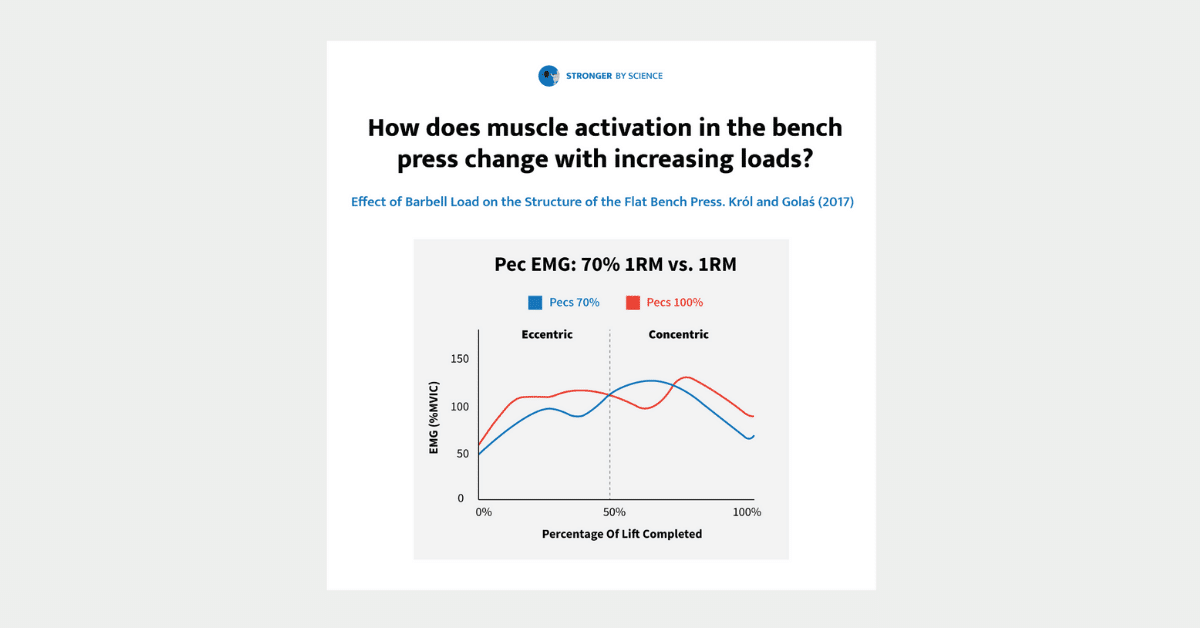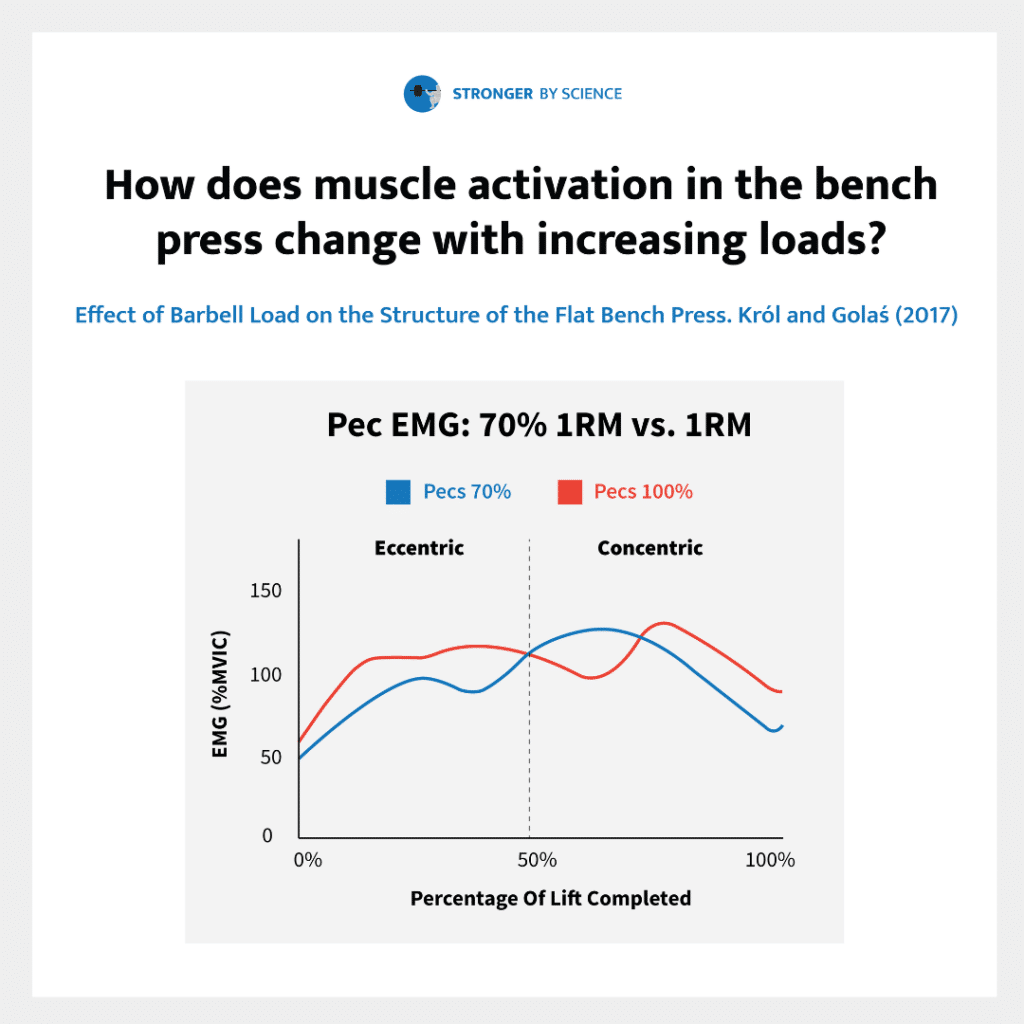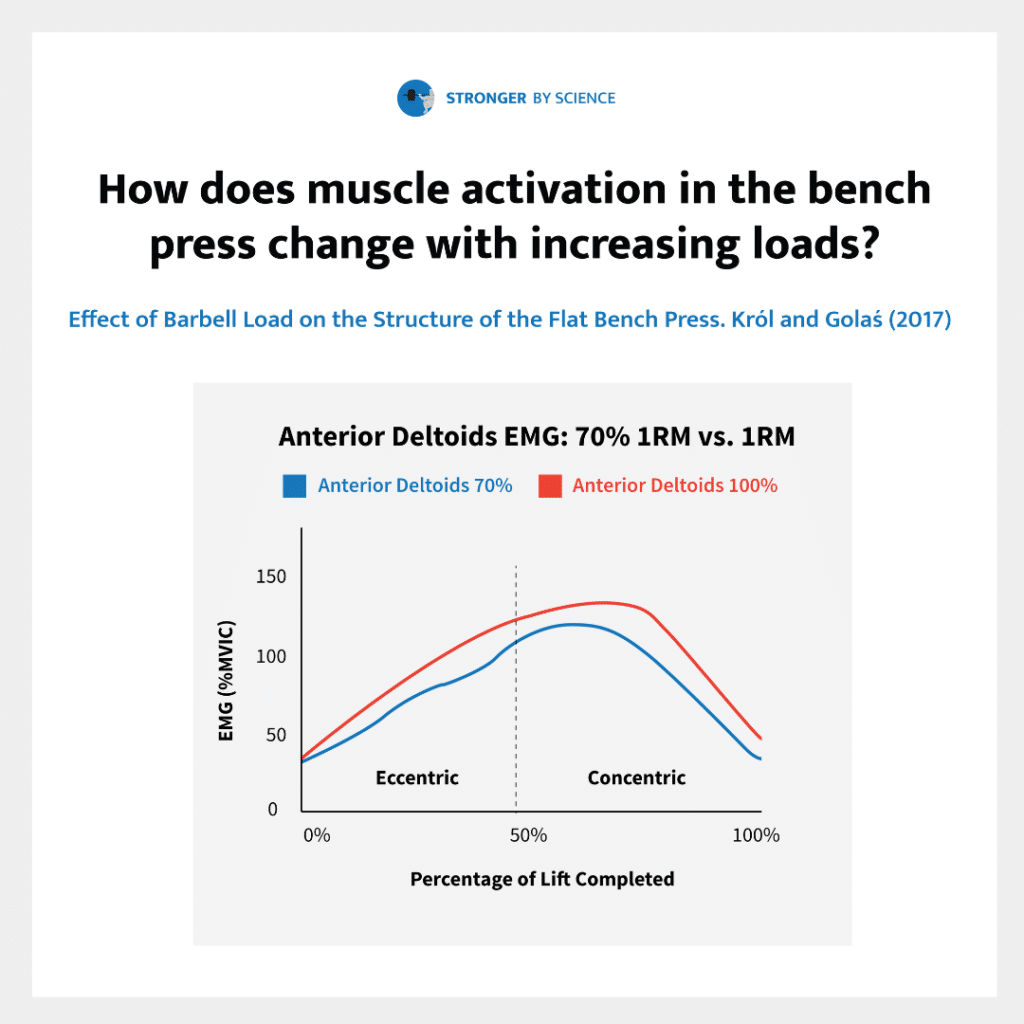A 2017 study by Król and Golaś had subjects perform bench press reps with loads ranging from 70% to 100% of 1RM. The researchers used EMG to estimate muscle activation throughout the lift. The image above shows how pec, triceps, and anterior deltoid EMG changed between submaximal (70% of 1RM) and maximal loads.
Overall, it suggests that muscle activation doesn’t increase similarly for all prime movers as loads increase. Specifically, the pecs may already be near maximal activation with submaximal (70%) loads, whereas the anterior deltoids, and especially the triceps, experience larger increases in activation as loads get heavier.
Click to expand any of the corresponding figures for more info.
One potential implication from this information is that specifically training the triceps may give you a bit more top-end “kick” when you’re attempting maximal lifts. However, it should be understood that this takeaway is fairly speculative.
Another potential implication is that bench press training for pec hypertrophy may be best accomplished with somewhat lower loads. If pec activation is near-max from the first rep of a set, even with moderate loads, training heavier (say, in the 5-8 rep range) may simply be sacrificing the number of highly stimulating reps you can accomplish for your pecs over the course of a workout. And, there is a bit of longitudinal evidence to offer some support for the idea that lighter bench press training may be slightly more effective for pec growth. A 2013 study by Ogasawara and colleagues examined the effects of training the bench press with 30% vs. 80% 1RM loads. While the differences between heavier and lighter training didn’t reach statistical significance, the subjects experienced slightly more pec growth when training with 30% of 1RM (21.1% with lower loads, versus 17.6% with higher loads), and experienced slightly more triceps growth when training with 80% of 1RM (11.9% with higher loads, versus 9.8% with lower loads).
Finally, these patterns of muscle activation may differ between the sexes. You can read more about that here.
These studies were previously reviewed in more depth in 2017 issues of MASS research review. If you want to subscribe, you can find the plan that works best for you here. Subscribers get full access to our entire back catalog of study reviews.







